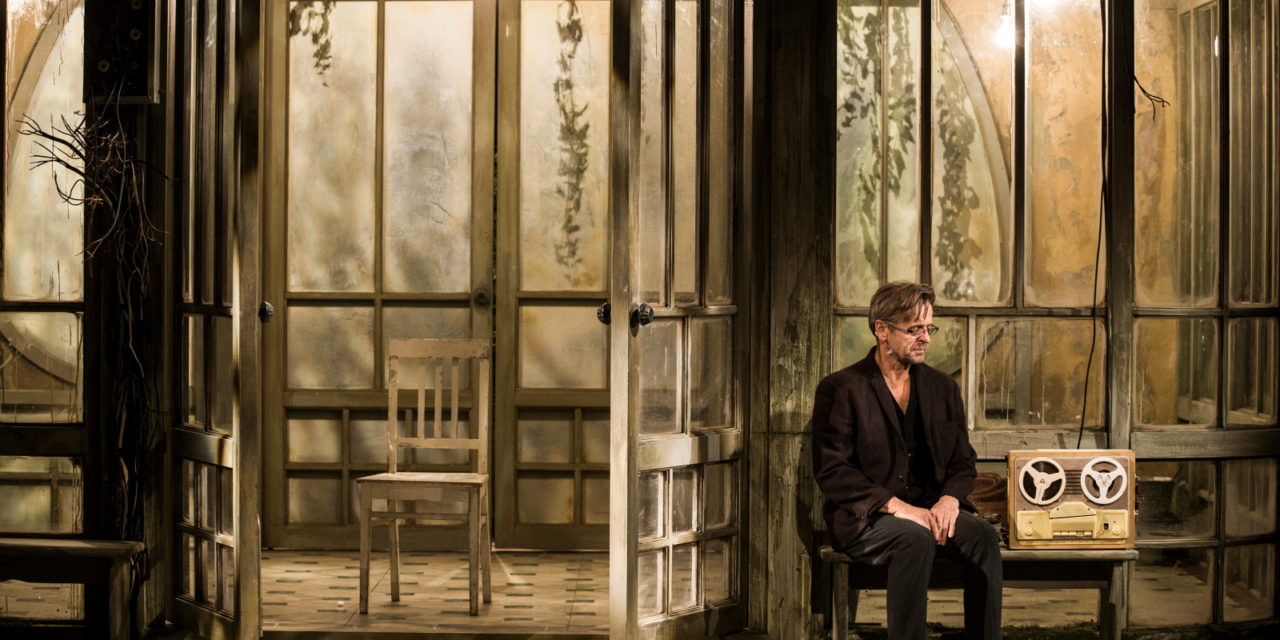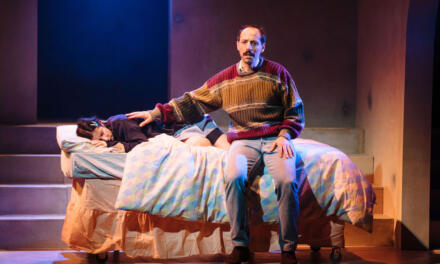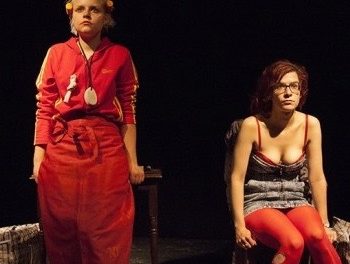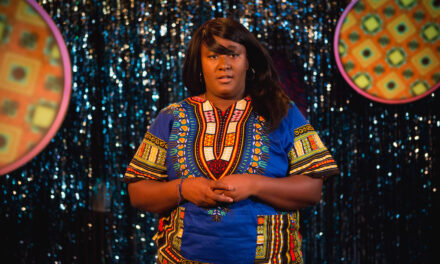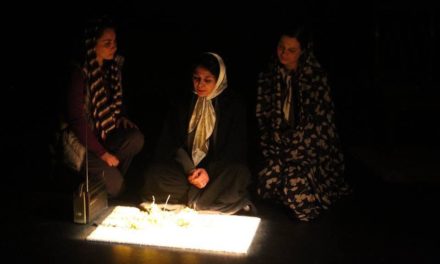On a Sunday afternoon at the Cutler Majestic in Boston, Brodsky/Baryshnikov had its final Boston performance as part of its North American tour. Using recitation of Joseph Brodsky’s poetry in its original Russian complimented by movement, the legendary dancer and actor, Mikhail Baryshnikov, and Director Alvis Hermanis paid beautiful homage to the Brodsky.
The links between the two artists in the title are obvious, both having left their native USSR and landing in the United States, albeit under different circumstances; Brodsky was strongly encouraged to leave, and Baryshnikov defected. Both left on a basis of devotion to their craft and the pursuit of artistic freedom, perhaps more than a history of deliberate attack on the Kremlin itself. The poems selected deal, not with the political, but the corporeal and with isolation in life and particularly in death. Brodsky’s fixation on the body lends itself quite naturally to having choreography sprinkled throughout. With its themes on urgent and impending mortality (time, decay, blackness, and unconsciousness were a thread throughout), it could only be successfully executed by someone with Baryshnikov’s breadth of artistic and life experience.
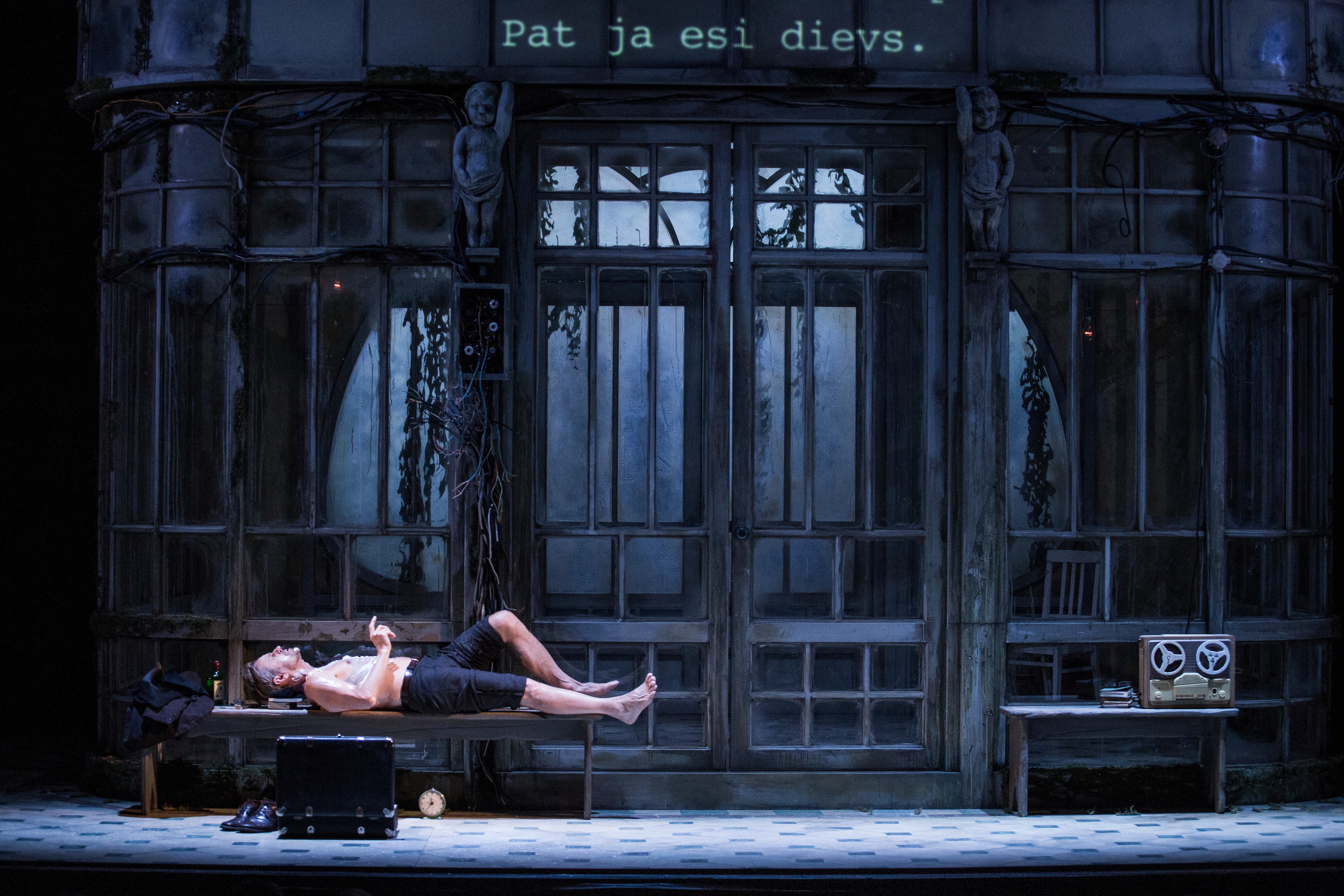
Photo Credit: Janis Deinats
The lone set pieces were a bench and a gazebo-like structure with glass windows hinting at a train station. The gazebo was the center of most of the movement when there was movement and not just recitation. Baryshnikov made a slow, deliberate entrance, taking in his surroundings and introducing us to the idea of the contemplative man alone, with a small suitcase of literary volumes and a clock. The poetry was in part recited from memory and read by Baryshnikov as well as played on a recording when he had more intense choreography to execute. Most of the movement was performed inside the glass planes of the gazebo, with the recitation in the foreground. The poems were recited in their original Russian with English supertitles scrolling across the top of the glass structure. Brodsky himself wrote first in Russian before translating into English for his American audience. Translations in this, however, were done by Jamey Gambrell and the English abandoned Brodsky’s typical attempt at a rhyme scheme. In each poetic delivery, a fine attention had certainly been paid to diction and cadence to a moving end. The vocal cadence of the one truly blatantly political of the poems, stood out from among the others as almost chant-like, or as though being sounded by a bullhorn. It began with a recitation from Baryshnikov to a recording of presumably Brodsky himself.
The choreography itself spun through a range of subtle to more bombastic, creating a dramatic arc for the 90-minute piece. Baryshnikov’s commitment to using the whole body is unflinching. Whether it was part of the opening movement, when a chair balanced against his back served as the hint to the centaur referenced in a poem, or the use of his fluttering arms as a butterfly metaphor, his conviction in thought and body is mesmerizing. The illustrative nature of the metaphors manages not to be redundant or heavy-handed. In the very effective poetic and choreographic climax, Brodsky posits tragedy as a female. In it, “Tragedy” is an expected and relentless grotesquely sexualized macabre figure. Baryshnikov’s choreography utilizes a chair as he twists himself in gnarled formations and simulated attacks upon a doomed body. As an American audience member, one’s only struggle is to flip back and forth between Baryshnikov’s captivating presence onstage and the very dense poetic language scrolling past.
Joseph Brodsky met an early death when he suffered a heart attack at the age of 55 in 1996. In one poem featured, Brodsky writes of how the people from his youth who had now forgotten him could make up the population of an entire city. It’s safe to say that there are those who do remember him and are still paying him an enormously effective tribute in this tour.
This post was written by the author in their personal capacity.The opinions expressed in this article are the author’s own and do not reflect the view of The Theatre Times, their staff or collaborators.
This post was written by Katrina Holden-Buckley.
The views expressed here belong to the author and do not necessarily reflect our views and opinions.

